It was high summer in the high Lemhi at nearly 7000 feet elevation. The year was 1990, and Caryl and I were working on the highest and one of the remotest ranch spreads in these Central Idaho Rockies. The owner of it all, Lloyd Clark, was coming hot and heavy with a young and green draft horse team down the edge of the hayfield. He pulled the clattering mowing machine up to us as he quietly spoke to the awesome team of huge bay colored Belgians that towed it across the undulating meadow.
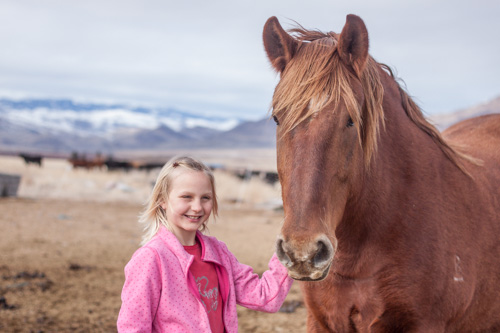
Although they were young and inexperienced, he expertly handled them in front of the rattling contraption that could make green horses frantically run in a terrified gallop. They had set down to work now after a few rounds on the big meadow, laying the tall wild hay down in a green carpet behind them.
Lloyd quietly dismounted from the mowing machine seat, carefully leaving the dry hay on the steel seat behind him that was his only seat cushion. He nodded at the seat. “Make sure ya don’t use green hay. The heat will build up under yer butt all day and you’ll end up with a burning rash by lunchtime.” He caught each of our eyes with a trademark wink. “It’s hard to keep a goin’ with your butt afire.” His wrinkled and ancient weathered face slowly twisted into a broken toothed grin. He quietly and deliberately placed the long leather lines that connected to the horses’ bits, and controlled them, into Caryl’s hands. “I think you’d better take them.” He caught my eye with another wink.
I knew what was up. Lloyd could tell that Caryl was already a hand with horses and understood them better than I. After all, she was practically born on a horse. I was a latecomer to the horse idea; although I was always drawn to them it wasn’t until I was in my 20s that I began to spend entire days horseback.
I have to admit, I was a little disappointed. I wasn’t afraid of a runaway. But Lloyd had 60 years of experience on me and he knew that broken gear, freaked out horses, and lost time were too expensive to risk with a greenhorn like me. He knew I had put up a fair amount of hay running tractors, but to him, tractors were dumb iron and taught me nothing that really mattered.
Caryl took lines, gave a little cluck and was gone with the high stepping and barely in control team of Pet and Pat. Lloyd then set me up with Roanie and Blaze, a much older and experienced team who knew more about the hay business than I ever would. They would put me through the paces of green teamster at the entry level.
It was a new thing to me, this learning from animals. Like most twenty something young men, I hadn’t found my ears yet, and I’m afraid I was a difficult student. It would be a long road to graduate level for me, and the patience of old boys like Lloyd Clark made this unlikely and difficult student prospect into one with some potential.
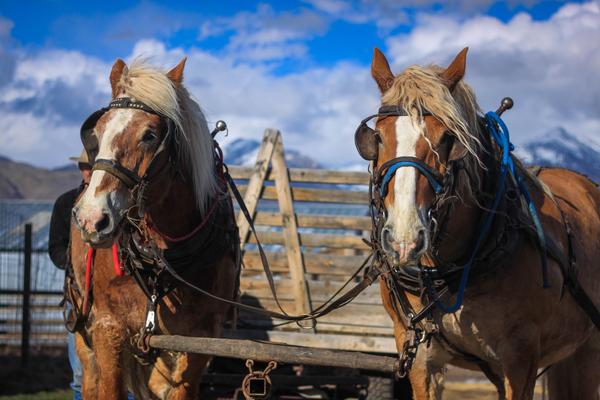
Some years later, Lloyd’s age started to catch up with him, and he could no longer lift the heavy harness over the huge horses he partnered with. We continued to keep in touch, and would journey up to his high Lemhi Valley log cabin frequently.
As we sat down to one of his wife Beva’s feasts of home raised lamb and produce of the land, he looked over at Caryl and I between bites. “I’ve been thinking about what to do with my favorite team.” He slowly winked at both of us. “I’ve figgered I want them to live with you.” I knew who he meant; it was Pat and Pet. Bay colored drafts like Pet and Pat were rare in the Belgian breed, and he spoke proudly of them.
Pet and Pat fell into the paces of their new home on Alderspring. I fed cows with them that winter, pulling a sled over the meadows in all kinds of weather. Pet, the older mare, got used to me and partnered with me in the rough going of the hills and breaks I would take them through to get hay to the beeves. Pat, on the other hand, always had a wild eye toward me, and if I wasn’t minding her constantly she would break into a trot or a run at the slightest provocation.
I tried to talk to her in that quiet way that Lloyd had, but she would just pin her ears and ignore me. I just couldn’t get her to connect with me, and as I forked hay, she would often try to run away with the wagon and gear the second I turned my back. I found myself on several occasions diving for the lines to regain control of the runaway; hay would be flying off, cattle parting like Moses’ Red Sea in front of us with tails in the air, dogs jumping off and running for home. I would clamber forward on this bouncing and half flying ramshackle rig to the front to grab tied lines and with alternating pulls and “whoa’s” would finally regain control before we ran out of field. Occasionally, there would be no use in continuing as all of the hay fell off in the wild ride.
The older mare, Pet, was all ears. She minded me. But her wild eyed sidekick, Pat, would only listen to the pull of the lines on her mouth.
The next summer, I purchased over a hundred big pine trees on a high forested mountain along the Continental Divide. It was about a 2 hour drive up there via twisted logging roads, and since it was a horse logging only sale, Pat and Pet would be my partners in the woods. The country was blanketed with thick, high altitude forests on rocky ground. The trees we could harvest were marked with blue paint and were scattered sporadically through the timber stand.
With horses, our impact would be light on the land, and since we were only removing about one tree per acre, the integrity of the forest would be untouched. After a few days, Pet and Pat learned the ways of negotiating the woods, pulling huge logs with me talking to them and telegraphing my requests to them via the long leather lines. We’d work at a pace that they could handle, and they seemed to relish the work, leaning hard into the traces that connected them to chains wrapped around 50 foot logs.
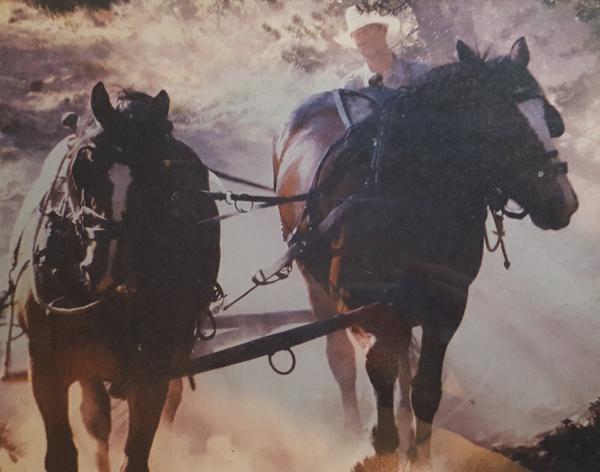
Pat was very slowly coming along, and her wild eyes became noticeably less after days and nights of us living together in our little logging camp. I desperately needed these girls to trust me here, as there were so many trees, rocks and down trees to negotiate in the thick forest. Often, the mares couldn’t see me, but could only hear my voice to be assured that all was well. I was in my thirties at the time, and years in the woods on mountainsides made me sure footed as ever. I was mountain conditioned from working on steep mountain slopes at high altitudes, and could nimbly hop from log to stump, even in wet and snowy timber on steep rocky mountain slopes.
My young and cocky woods wise self hardly ever hit the dirt, but this day was different. I had just hooked up a huge pine log to the doubletree behind the girls who were ready on a steep mountainside for the drag downward. They felt me hooking up in the thick underbrush, and were quivering in anticipation of leaning into the dead weight with full force. They paced in place and pawed the ground, ready for my signal as I quietly fingered the leather lines in my gloved hands.
Pet and Pat had moved quite a few logs by now, and knew that the first lunge forward was defining. Once forward momentum was established with the 1000s of pounds they pulled, it was easier to maintain that than to ever start again. As a rule, we didn’t stop until we reached the logging road, thereby making it easier on them; the starts were always the hardest part of the journey.
I slowly tightened the line tension in my hands, and gave a barely perceptible squeak from my lips. It was all it took, and the massive equine force in simultaneous partnered power lurched forward into shoulder, transferred to collar, connected into traces, linked to double tree, and tightened chains that twanged a musical note as they cinched tightly around the green log comprised of 45 feet of dead weight on the forest floor.
The log broke free of the curse that gravity placed on it, and moved first imperceptibly forward. Then, it briefly dug into the soft soil, but the ancient elegance of lifting draft that transferred power from the horse to the collar to the double tree behind lifted the log and floated it to the surface on the debris that littered the old growth forest floor as it slid forward through the big trees. Momentum was established, and the two mares eased into a quick walk as they continued tension on all that followed.
I ran alongside the log, my short human steps needing to jog to keep up with the team’s massive strides. I jumped from side to side of the log, occasionally jumping on board and riding it until it rolled underfoot in its serpentine passage over the pine needle duff. We bumped over rocks and other logs. Occasionally, the large end of the pull log would catch on a down and dead log that would explode into splinters under my steps. It was quite exhilarating. I soon learned that there were more than the 2 horses on the team. They were now including me as part of them; I included them as part of me; we worked together in a synchronous symphony of power and grace.
We broke into a clearing and the trail tilted sideways. I found myself on the downhill side of the snaking log, and knew by reflex that I needed to cross to the uphill side in case it would roll toward me. There was no time to think. I jumped up on the round of the log as we cruised downhill. The road and log landing were in sight now, and we were nearly at the end of the pull, and the girls knew it and increased their pace.
But then, the log swung wildly around an unseen rock, and caught me unawares. I lost balance and launched off of the slippery pine log and cratered in the dirt 5 feet in front of it, lines slack in my hand, and as I hit I reflexively braced to get run over by about 1500 pounds of moving log.
“Whoa!” I instinctively shouted. In a microsecond, all of the clamoring motion stopped. I lay on the ground in a tangle of leather lines, heavy chains and forest litter. All was quiet except birds singing, and the girls panting, in sight of their landfall, in a place and position they had never stopped before. I rolled over to see the growth rings of the freshly cut pine log inches from my face. I stood up, lines still slack in my hand to see the two mares nonchalantly looking back at me, breathing deeply.
I caught the eye of the young mare, Pat. Quiet. Trusting. Resting. Waiting. Graduation had finally happened after this, the final exam, and I was acutely aware that she wasn’t the pupil. The student was me.
********
December 10, 2016. Baby, it’s cold outside. Subzero cold with tiny snowflakes steadily falling. Boots squeak and crunch in the zero visibility fine snow fog as I fork green grass hay to the waiting beeves. They seem indifferent to the cold as they put their rime encrusted mugs down in the flowered green that takes them back to the recent memory of lush summer pastures. I look closely at the fresh hay bale slice lying in its bed of 5 inches of fresh snow, and knelt down on the hay as the beeves hungrily devour it. The pressed ton bale is like a fossil record of the plants that lived here a few months before in this now frozen field.
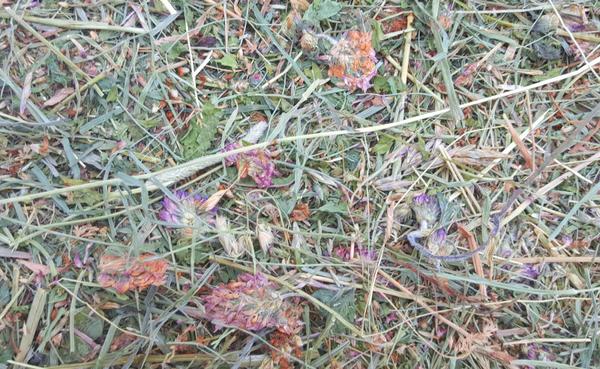
There are about twenty species of plants in the hay before me; I see the still purple and pink blooms of clover and alfalfa in dried salad mix of timothy, orchardgrass and dandelion.
I inhale a deep draught of fragrance. It smells intoxicatingly sweet. It is why the beeves have their heads down with abandon. I stand up to fork some more off our moving platform, looking at beeves with heads down. I think it is the best hay on the planet; a smorgasbord of choice. And that choice makes for the best flavored beef I can create because when the animals have choice, flavor is maximized.
Last week, I presented the story about Alderspring’s unique capture of flavor to an audience in downtown Boise. I confessed the fault I had 15 years ago of paying homage to the green god of alfalfa. American agriculture is obsessed with alfalfa, and raisers of grass fed beef have been nearly categorically swept away by alfalfa’s siren song. It’s hard to find forage so full of digestible apparent goodness. Indeed, beeves do gain well on it. But in large amounts alfalfa is toxic to the point of fatality in bovines, and leaves unmetabolized protein in muscle tissue. The alfalfa god gives rapid and relatively cheap gain, but leaves beef tasting musty or fishy, or reminiscent of liver. Hardly what you would want for the Christmas prime rib!
The next day, on my way home from Boise, the blizzard conditions I encountered over the Central Idaho Mountains lengthened my trip to over 7 hours. I had plenty of time to reflect on how we arrived at this spot of offering the choice of vegetative diversity on pristine highly mineralized soils. It wasn’t found in trade journals, podcasts, or grazing conferences. It wasn’t taught in university classrooms. There was no book that supported what I had learned.
It was the beeves that taught me the difference. Thank God that they are patient teachers, just like the horses I have known and loved. Now, my beeves thrive on more diverse pastures, happily devouring the choices I have learned to provide them to their greater wellness”¦and ours.
I’ve got much more to learn, but as I have gotten older, I have realized that the most important lessons will be learned by observing the animals and trying to mimic what I see native animals around us doing. I look forward to the lessons that all of Alderspring’s animals have the patience to present. And I hope that you realize that you are intricately connected to those lessons and the animals that teach them.
Thank you for keeping the Alderspring school open.
Happy Trails!
Glenn, Caryl and girls.
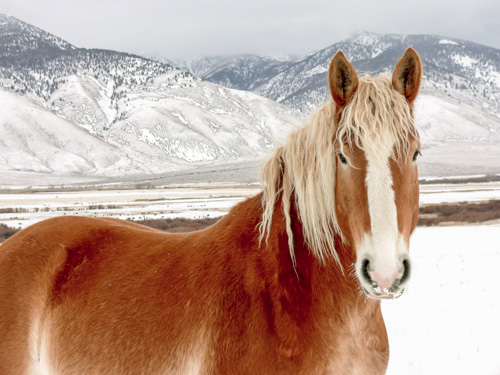

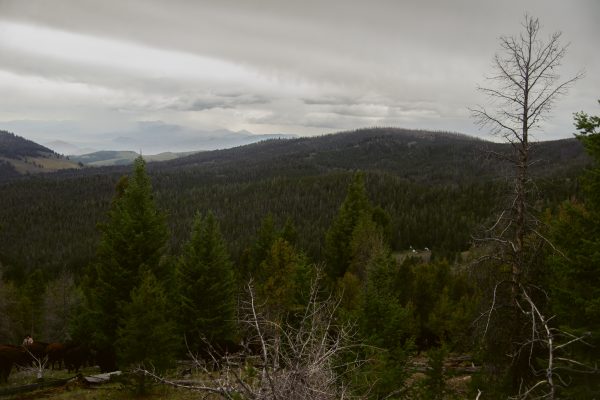

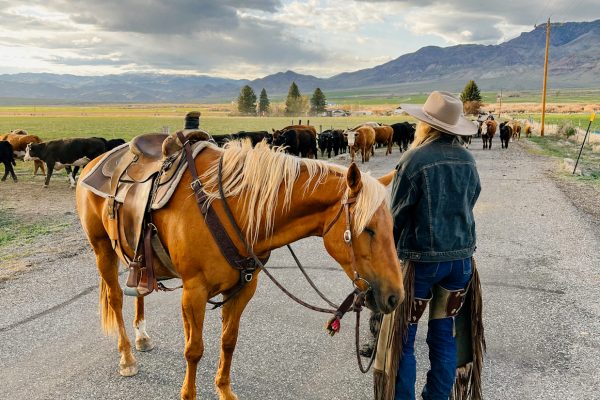

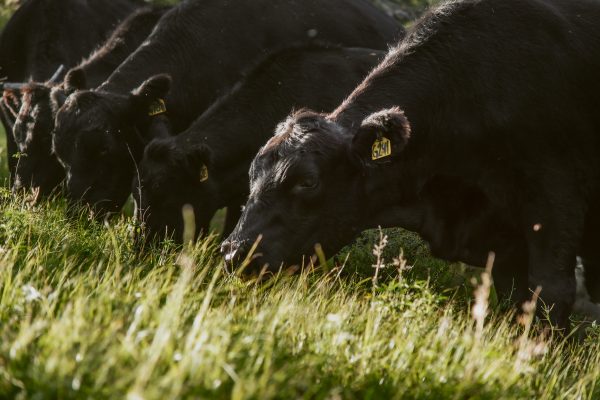

Leave a Reply